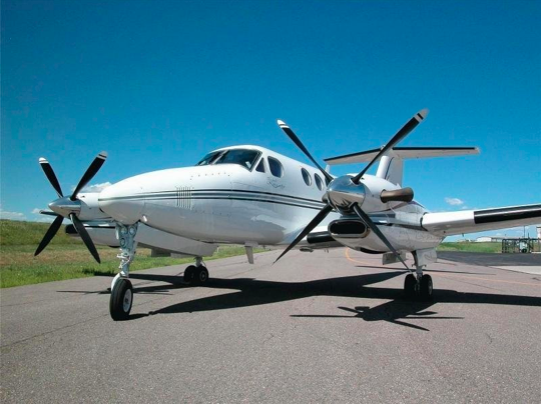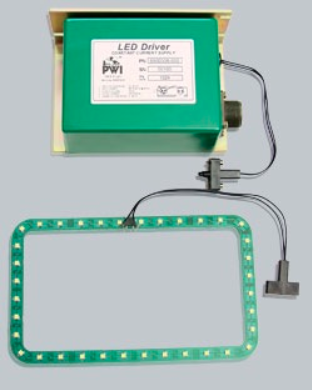Have you ever thought about how the interior cabin lighting came about in the Beechcraft King Air, how it has changed and where it will be going?
PWI Inc., based in Wichita, Kansas, developed the first 28VDC (volts direct current) Fluorescent Lighting System for the Beech Aircraft Corporation back in 1970. This system was first used on the King Air C90 and eventually incorporated into the King Air 100’s and 200’s.
As for the details, PWI was the first to develop a 28volt inverter to convert the standard on board 28 VDC in the aircraft to a high voltage AC output to drive standard GE 5108 fluorescent bulbs. Throughout the past 33 years, PWI has made several design modifications to accommodate aircraft updates and new configurations, but the basic technology has remained the same. This fluorescent system is still in use today on these models of King Airs.
In 1983, when Beech Aircraft began the development of the “Super King Air” (which eventually became the Model 300), PWI used this core technology to design a new system of florescent light that utilized Cold Cathode Fluorescent Lights (CCFL). This system still operated on the aircraft 28VDC line but the inverter was ungraded to illuminate CCFL lights. The CCFL lights were more robust and had a much longer life span. The other significant feature of the CCFL’s is they can be custom shaped to fit any contour or configuration.
With the onset of white LED (Light Emitting Diode) technology in the mid 1990’s, general aviation has been moving away from fluorescent lighting to LEDs. PWI began getting requests from King Air owners for LED replacements for their existing Fluorescent lights with LEDs.
 In 2009, PWI began developing a LED retrofit for the King Air 300 series aircraft and received a STC in July of 2011. PWI is currently working on a STC for the King Air C90’s, 100’s and 200’s. This STC should be approved by the FAA in the first quarter of 2014.
In 2009, PWI began developing a LED retrofit for the King Air 300 series aircraft and received a STC in July of 2011. PWI is currently working on a STC for the King Air C90’s, 100’s and 200’s. This STC should be approved by the FAA in the first quarter of 2014.
There are significant advantages to these new LED upgrades. They are “plug and play” retrofits, which utilize the existing connector, wire harness and mounting configurations on the aircraft. They also provide significant improvements in operating life. The LED’s also operate at a lower current and temperature. They also reduce the system weight by as much as 45% over the fluorescent system. This translates to over 12lbs savings on a King Air B300. Another big advantage is reduction in EMI emissions, which is important with all the advance in cabin managements systems and avionics.
Now you’re schooled on King Air Lighting 101. From our standpoint, we will continue to evolve with new technology and advancements. Contact us with any questions or interests on the King Air series LED lighting retrofits.

About the Author:
Robi Lorik, President, PWI, Inc.
Son of PWI founder Miki Lorik, Robi was introduced to the business at a very young age. Learning the full ropes of the business, he started in the machine shop and worked his way up through production and operational duties and ultimately promoted to President of the company. With over 37 years in the business, his expertise is unprecedented. You can contact Robi via contact@pwi-e.com or 316-942-2811.


